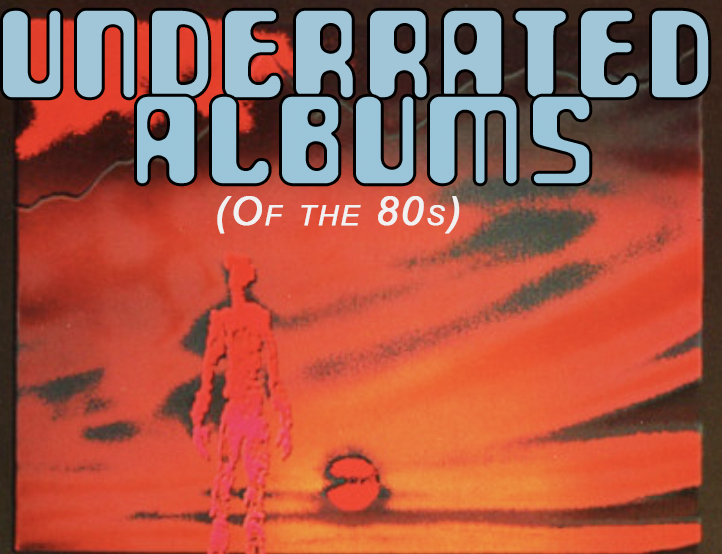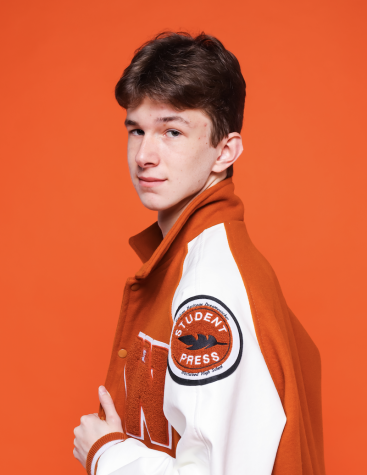Underrated Albums of the 80’s
The 80s brought us a lot of pretty bad music, but some buried gems do exist in the decade.
February 25, 2021
It’s miraculous how far the 1980s have come. Up until the 2010s, they were an easy punchline, a decade of regrettable fashion decisions and Def Leppard. However, it seems that in recent years, people have been looking back at the decade a bit more fondly. 80s nostalgia arguably reached its peak with the release of Stranger Things, spawning many annoying kids in comments sections to claim that they wish they were born in the 1980s. I wouldn’t go that far, but I do really enjoy a lot of 80s music. It’s probably not my favorite decade for music (that would probably be the 1970s) but there’s a lot of great music to be heard beyond the obvious choices like Talking Heads or Whitney Houston. For a decade that has been somewhat oversaturated in our modern landscape, it’s nice to rediscover some hidden gems among the Phil Collinses of the world.
5. To Live and Die in L.A. by Wang Chung
Wang Chung are the best known band on this list thanks to their hugely popular 1986 hit Everybody Have Fun Tonight, but before this the duo recorded a very underrated soundtrack album for To Live and Die in L.A., a stylish cop thriller directed by Exorcist director William Friedkin. You’d think the soundtrack would be cheesy, overblown and ridiculous… and you’d be right. Wang Chung delivers pounding synths, booming drums and lush orchestrations to the scant 8 song track list, and it’s all the better for it. The first side is made up of melodic and lyrics based songs, while the second is instrumental score. The first side is the best, with the classic title track being a highlight. A succession of hook-filled, synth heavy songs follow, segueing into a string of strong instrumentals. It’s worth a listen, but I have to admit that I have yet to see the film that the soundtrack scores. Sadly, it’s unavailable on any streaming platform, and I’m too broke to afford the DVD… because I spent all my money on a vinyl record of this album.
Best song: To Live and Die in L.A.
4. Colossal Youth by Young Marble Giants
The only album released by the elusive trio, this album was one of Kurt Cobain’s favorites. Its slow, minimal music, built around lower than low bass and dry, scratchy guitar, attoped with Allison Statton’s ghostly voice. The album was clearly an influence on modern bands like The Xx and Chromatics, and its status as the band’s only release only adds to its mysterious sound. The songs are almost chorusless, and the only embellishment is the occasional synthesizer wash. While the minimal instrumentation can make the songs sound intimate and sometimes heartbroken, songs like the excellent Brand New Life have a earnest quality to them, proving that you don’t need lush strings or booming drums to achieve soul stirring music, a concept that many 80s artists should have picked up on. No drums, short song lengths, enigmatic lyrics and bass being the prominent instrument made the record unpalatable to a mainstream audience, but these only added to the record’s rabid cult, who embraced the somber yet hopeful tone that pervades the album’s best songs.
Best song: Brand New Life
3. Neruda by Red Rider
Canadian rock group Red Rider are best known for their minor hit Lunatic Fringe and never really made much of an impression in the US. Despite this, this forgotten 1983 release made a huge connection with me. I have never heard it brought up when discussing 80s albums, and I had no idea of the band’s existence until relatively recently. It’s not a cult classic like all the other albums here, and today lead singer Tom Cochrane is best known for writing Life is Highway, a song that would later be covered by Rascal Flatts for the Cars soundtrack. But this album is way better than anything used to score Lightning McQueen’s adventures. Despite being made by Canadians, it has a sun bleached, desert rock atmosphere reminiscent of Australian rockers Icehouse or even Bruce Springsteen. It’s music to drive around empty stretches of desert at night to, music to play when riding into the sunset of New Mexico, music to listen to as you ride into a neon lit motel, untouched by modern society. To the average listener, their music might be too reminiscent of boring MOR artists like Loverboy or even The Eagles, but investigate deeper and you’ll be greeted by a reverb drenched gem that evokes the poppier moments of Pink Floyd and the more somber moments of Bob Seger.
Best song: Human Race
2. Green by Hiroshi Yoshimura
Japanese ambient composer Hiroshi Yoshimura made quiet, measured and mantra-like music that never really left Japan. Yoshimura was a pioneer of a genre called environmental music, a subset of new age that combined soft, plucking electronic melodies with natural noises. The melodies on this record in particular are simple and beautiful, possessing none of the languorous and syruppy pads that seem to clog up most new age relaxation music. Yoshimura’s excellent music was lost to time until 2017, when the YouTube algorithm began recommending this album to users. I was first exposed to Hiroshi’s wonderful music with his 1993 album Wet Lands, and this eventually led me to Green. Ever since my discovery, Hiroshi’s music soundtracks my life. It’s great for rainy days, nature walks, and gardening. The simple melodies are unobtrusive and calming, and I’ve created many fond memories listening to his work, whether it’s driving through town in the rain while playing Green or relaxing amongst the trees and fields of rural Texas as the sun goes down while playing Wet Lands. Green is an instant charmer, possessing beautiful minimalist cover art and arpeggiated synths that sound timeless. I prefer the version that doesn’t have any natural sounds, but others might enjoy the added ambience. Regardless of your current mood, Green will chill you out and put you in the right state of mind. Hiroshi didn’t live long enough to see his work become widely known, but I’m sure he would have loved to see his music be embraced by the internet generation, who now have a permanent soundtrack to their natural excursions.
Best song: Green
1. Hats by The Blue Nile
Hats, the 1989 album by Scottish band The Blue Nile, is not an album that you can just listen to. It’s not something that can just be put on at any moment. It has to be night, and you have to be melancholy to truly understand its many subtleties. Even now, as I sit here writing this while listening, I feel wrong. I’ve only ever listened to The Blue Nile late at night, and it feels very odd to hear them as sunlight streams through my window. It’s music that’s easy to cry to, so don’t put it on hoping for a fun filled 80s time. And yet, it’s not soul crushingly depressing like Joy Division. Listening to The Blue Nile reminds you that you’re alive, and that despite the heartbreak that the world will put you through, there’s always a light. Light is a frequent motif for this album, brightening up the dark streets that the wistful protagonists walk. Despite its reputation as a depressing album, Hats is incredibly hopeful and while yes, it is heart wrenching, singer Paul Buchanan has a voice that can both make you cry and also reaffirm your faith in humanity at the same time. Try to listen to his soaring vocal at the end of The Downtown Lights and not get chills. The Blue Nile’s detractors claim that they are too reminiscent of simpering balladeers like Chris De Burgh, Phil Collins or late period Rod Stewart, but that misses the point. The Blue Nile makes music that is awe-inspiring in its maturity, lacking the smugness or cheesiness of those singers. You can tell Buchanan really believes every word he says, and the songs aren’t simple declarations of love, sadness or heartbreak. Instead they evoke a weary sense of hopefulness, a strive for improvement, and a yearning for real human connection amongst the coded words and steely glances of a failing relationship. No sentence evokes the feeling this stellar record fills you with like the lyrics to The Downtown Lights bridge:
The neon’s and the cigarettes
Rented rooms and rented cars
The crowded streets, the empty bars
Chimney tops and trumpets
The golden lights, the loving prayers
The colored shoes, the empty trains
I’m tired of crying on the stairs
The downtown lights
Yeah, yeah
The Blue Nile have only released four albums, their last being released in 2004. Here’s hoping that they make a comeback in the 2020’s.



